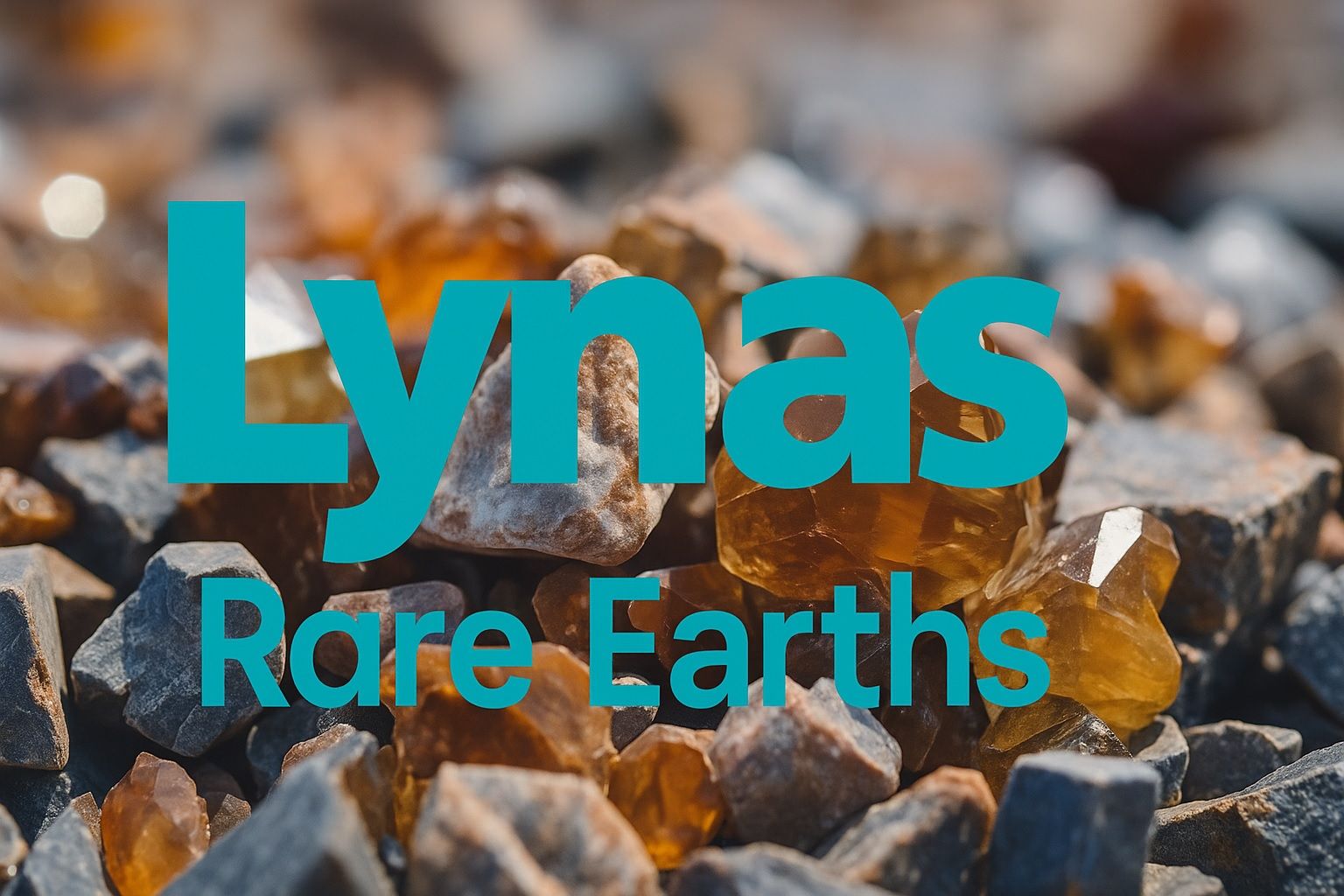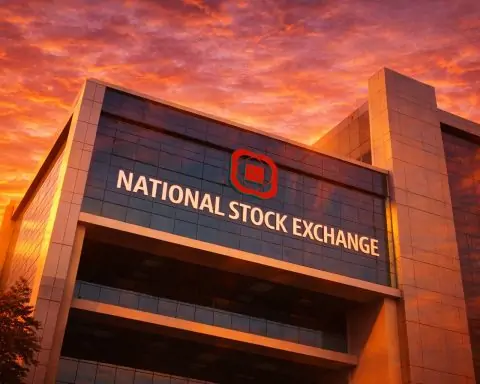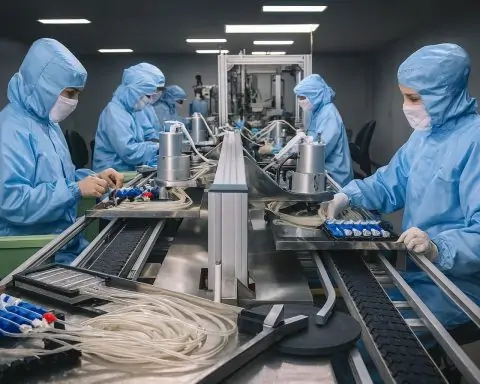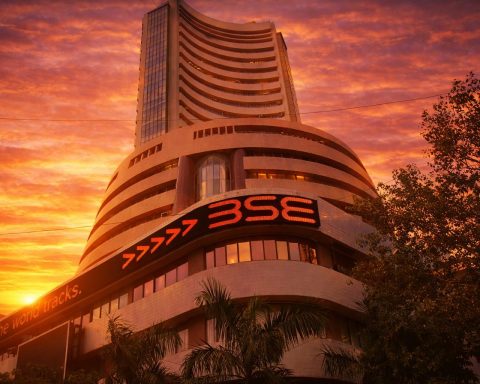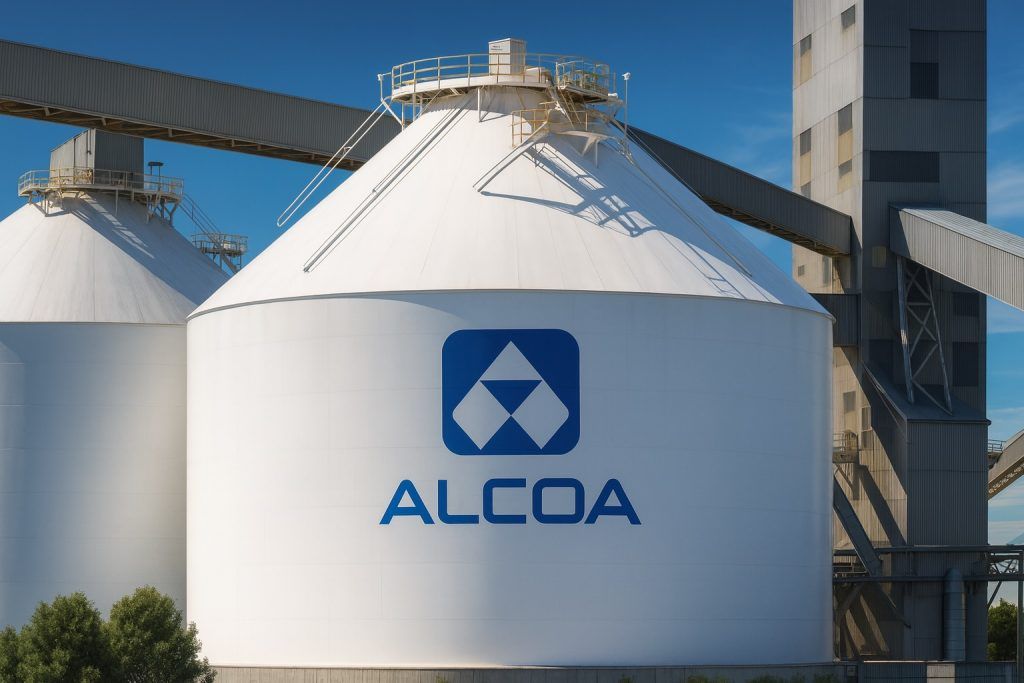- Share Price (Oct 2025): As of Oct 21, 2025 Lynas (ASX:LYC/OTC:LYSCF) trades around A$19 (US$14.00), down from a mid-October peak but still near its 52‑week high [1] [2]. (52-week range: A$6.16–21.96 [3]; US‑OTC: US$3.75–16.20 [4].)
- Recent Surge: The stock jumped sharply in October 2025, hitting a 14‑year high on Oct. 8 after announcing a U.S. magnet-supply partnership [5], and gained further on Oct. 20 when Australia and the U.S. signed a Critical Minerals Framework [6] [7]. Overall, LYC/LYSCF is up roughly +50% in October [8] (and over +200% year-to-date).
- Catalyst – Noveon Magnetics Deal: On Oct. 8 Lynas signed an MoU with U.S. magnet-maker Noveon Magnetics to build a fully traceable U.S. rare-earths/magnets supply chain. This “surged Lynas to a 14-year high” on Oct. 8 [9] [10]. Noveon’s CEO Scott Dunn said the partnership “delivers what the market and the U.S. government need most: capacity, certainty and speed” [11], and Lynas CEO Amanda Lacaze noted it provides U.S. manufacturers with a “secure and traceable magnet supply chain” [12].
- Catalyst – US–Australia Pact: On Oct. 20–21, President Donald Trump and PM Anthony Albanese signed a U.S.–Australia critical-minerals framework. Each country will invest at least US$1 billion in priority mining projects (within 6 months) [13], and the leaders touted an US$8.5 billion pipeline of projects [14] aimed at breaking China’s rare-earth monopoly. Albanese called it a “really significant day” and said “This is $8.5bn pipeline that we have ready to go. We’re just getting started” [15]. The deal galvanized rare-earth stocks in Sydney, with Lynas rallying into the close [16] [17].
- Unique Assets: Lynas is the world’s largest rare-earths producer outside China [18]. It operates the Mt Weld mine (WA) and processing plants in Malaysia and Australia. In May 2025 Lynas reached a milestone by becoming the first non-Chinese producer of dysprosium oxide (a critical heavy REE) at its Malaysia plant [19]. The company is also building a heavy-REE separation plant in Texas (for U.S. Dept. of Defense) and expanding NdPr oxide output toward ~12,000 tpa (per investor presentations) [20].
- Financials: For FY2025 (year ended June 30), Lynas reported A$556.5 million revenue (+20% YoY) but only A$8.0 million profit, down sharply from A$84.5M a year earlier [21] [22]. The profit slump reflects heavy investment and write-downs on its new processing plants (e.g. Kalgoorlie) [23]. In Aug 2025, Lynas raised A$750M (share placement) to fund its growth projects [24] [25]. Its fiscal 2026 capex is guided at ~A$160M [26].
- Analyst Views: Wall Street is mixed. The consensus 12-month price target is only ~A$15 (implying downside from current ~A$19) [27] [28], and several brokers rate LYC/LYSCF a “Hold”. (Zacks recently upgraded Lynas to a Buy (Zacks #2) on rising earnings estimates [29].) Analysts warn the stock is volatile – TS2.tech notes short-term overbought readings and profit-taking can send it back toward ~A$15–18 [30]. However, the unique assets and strong government support underpin a bullish long-term narrative.
- Geopolitics & Outlook: China still dominates rare-earth processing (≈90% of refining and 98% of magnet making) [31]. The new pact and allied policies (US price floors, EU Critical Raw Materials Act) aim to diversify supply. Experts caution that ramping alternative supply will take years: Goldman and Barrenjoey analysts say new projects won’t dramatically boost supply before 5–7 years, calling any 2027 target “heroic” [32]. In the interim, Chinese export curbs have kept prices elevated (e.g. NdPr oxide spot +40% in August) [33], boosting Lynas’s revenues. Overall, Lynas sits at the heart of a global push to “sell independence” from China [34] [35], and many strategists predict sustained demand for its products.
Full Story: Below we examine Lynas Rare Earths’ recent news flow, stock trends, growth plans, and expert analysis in detail.
Stock Performance & Recent Trend
Lynas shares have been on a tear. By mid-October 2025, the stock (ASX: LYC) had nearly tripled in a year (from ≈A$6 in late 2024 to ~$19) [36] [37]. In early October it spiked to A$21.96 (its highest since 2011) [38] on the magnet-chain MoU, then eased back to ~$18–19 as traders locked in profits [39]. In late Oct 20–21 trading it jumped again (+15% on Oct 20) [40]. By Oct 21 LYC was ~A$19 (US$14) [41] [42]. The OTC ADR (LYSCF/LYSDY) mirrors this: it closed at US$14.00 on Oct 20 [43]. (For reference, LYC market cap is about A$19–20 billion [44].)
Recent volatility is extreme. TS2.tech notes multiple 10% swings in days – for example, a 10% slide on Oct 21 followed a 15% jump the prior day [45]. Chart indicators (RSI ~80) suggest short-term overbought conditions. Caution is advised: analysts say one should “manage risk (stop-losses, position sizing)” around such swings [46].
Catalysts: US-Australia Minerals Pact & Magnet Partnership
U.S.–Australia Rare-Earths Framework
On Oct 20, 2025, U.S. President Trump and Australian PM Albanese announced a landmark “Critical Minerals Framework”. Its provisions include: each country investing at least US$1 billion into mining/processing projects in the other country, agreed financing and offtake rights, and even a joint price-floor mechanism [47] [48]. Importantly, they touted an $8.5 billion pipeline of priority projects. Albanese said “We have ready to go an $8.5bn pipeline… we’re just getting started” [49]. Trump predicted that within a year “we’ll have so much critical mineral and rare earths, that you won’t know what to do with them” [50].
The announcement was widely seen as a direct counter to China’s rare-earth dominance. U.S. Secretary of Energy and Australia’s Resources Minister will lead a joint task force, and projects like the Alcoa-Sojitz gallium plant (10% of world supply) and Arafura’s Nolans rare-earths project (5% of global rare-earth oxides) were greenlit for support [51]. For Lynas, the main impact is improved access to U.S. capital and offtake. While the deal won’t immediately flood the market, the market cheered the strategic shift away from China [52], helping push LYC higher.
Noveon Magnetics Partnership
On Oct 8 Lynas and U.S. firm Noveon Magnetics (a rare-earth magnet manufacturer) agreed to form a strategic partnership to establish a domestic U.S. magnet supply chain [53] [54]. The non-binding MoU covers supplying Lynas’s separated rare-earth oxides (both light and heavy REEs) to Noveon for alloy and magnet production, eventually delivering finished high-performance magnets to U.S. defense, EV, and industrial customers [55].
This tie-up is pivotal: by combining Lynas’s mining/processing with Noveon’s U.S. manufacturing, it closes a gap in Washington’s supply-chain strategy [56]. The deal sent LYC stock to new highs. Noveon’s CEO noted the partnership meets the urgent needs of the U.S. government (“capacity, certainty and speed”) [57]. Lynas’s CEO said it provides U.S. firms with a “secure and traceable” magnet supply chain [58], echoing the national-security framing of the Australia pact.
Together, these developments – the US-Australia framework and the Noveon MoU – paint Lynas as a critical node in Western rare-earth strategy. Lynas can now pitch to governments that it will deliver both raw oxides and finished magnet materials outside China. This narrative has attracted major investors; on Oct. 8–21 the stock rallied on rising optimism (and then some profit-taking).
Strategy, Operations and Growth Plans
Lynas’s core asset is its Mt Weld mine in WA, one of the highest-grade rare-earth deposits globally [59]. It ships ore to two separation plants: one at Kalgoorlie (WA) and the LAMP plant in Kuantan, Malaysia. Its “Towards 2030” strategy is to expand from mere mining into a fully integrated supplier of rare-earth oxides and magnet-ready materials.
Highlights of its growth plans:
- Output Expansion: Lynas has ramped up output of NdPr (light REEs used in EV/wind magnets). In Q4 FY2025 it produced ~3,200 tonnes of mixed rare-earth oxide vs 2,188 t a year prior [60]. It plans to reach about 12,000 tpa of NdPr output by 2028 (per investor presentations).
- Heavy REEs: In mid-2025 Lynas began producing heavy-REEs (like dysprosium, terbium) by bringing its Kalgoorlie cracking/leaching plant online [61]. The Q&A from CSIS notes Lynas is the first outside China to make dysprosium oxide commercially [62], a key strength since heavy REEs are even scarcer and more dominated by China.
- U.S. Separation Plant: Under a DoD contract, Lynas is building a Texas plant (Seadrift) to separate heavy REEs for defense use. (On an investor call Lynas warned this facility is complex: CEO Lacaze said Lynas is “the lynchpin of (the) outside-China supply chain” and new plants are “long and uncertain” [63], reflecting caution on big project execution.)
- Downstream Ventures: In July 2025 Lynas partnered with Korea’s JS Link to build a 3,000 tpa Nd-Fe-B magnet plant in Malaysia (near Kuantan) [64], moving into magnet manufacturing. Now with Noveon it’s targeting U.S. magnet production as well [65] [66]. These moves aim to give customers end-to-end supply assurance – not just raw ore.
In short, Lynas is aggressively verticalizing. It now mines, processes oxides, and is moving into magnet making, all underpinned by “Western” funding and offtake. Such integration is rare in the industry and commands a premium (reflected in Lynas’s valuation) in a market fixated on supply security [67] [68].
Financial Results and Funding
Lynas’s latest financials show the pains of rapid expansion. For FY2025 (year ended June 30, 2025) revenue was A$556.5 M, up 20% year-on-year, but net profit plunged 90% to A$8.0 M [69]. (The prior year’s profit was A$84.5 M [70].) This collapse was due to heavy depreciation and start-up costs for new plants (Kalgoorlie underperformed nameplate, and Seadrift remains under development) [71]. The company warned that DoD offtake for the Texas plant is still under negotiation [72], and actual commissioning may slip.
On the earnings call Amanda Lacaze emphasized Lynas’s role in securing Western supply, but also admitted risks: “development of new plants can be long and uncertain” [73]. The company noted it is lining up offtake and partnering with magnet firms globally to smooth this path [74].
To finance growth, Lynas raised A$750 million in August 2025 via a share placement (A$13.25 per share) [75]. It also offered a smaller A$75 M share-purchase plan to retail holders. The capital will fund phase-II plant expansions (Kalgoorlie) and sustain the Texas build. Lynas forecasts FY2026 capex of ~A$160 M [76]. The balance sheet remains very strong – with negligible debt (debt/equity ~0.07 [77]) and abundant cash from the raising.
Geopolitical Context and Market Dynamics
The rare-earth market today is shaped by geopolitics. China currently dominates globally: roughly 69% of mined output and 90%+ of refining and magnet making [78]. In 2025 China tightened export controls (adding 12 elements in Oct) [79] and briefly halted shipments in mid-2025, causing a price spike (NdPr oxide jumped ~40% in August [80]). These moves have set off a scramble among Western nations to build alternative chains.
Lynas sits at the center of this effort. Both the U.S. and EU have announced policies to subsidize rare-earth projects. For example, the U.S. Inflation Reduction Act and CHIPS Act include provisions for critical minerals; Europe’s new Critical Raw Materials Act allocates funding for overseas mining with allied content [81]. In this climate, Lynas’s Australian mining AND foreign processing footprint is a strategic asset. As Reuters notes, Australia hosts 89 active rare-earth exploration projects and is a “periodic table that lights up like a Christmas tree” of resources [82]. Lynas benefits both from its national origin (AUS critical-minerals friendly) and its global reach (Malaysia processing, U.S. partnerships).
However, analysts stress that new supply chains take time. U.S. banker Dan Morgan (Barrenjoey) told Reuters, “The time frame for various projects to be ready even for 2027 would be heroic… we might have supply growth in 5–7 years” [83]. In other words, while policy signals are positive, producers like Lynas will likely enjoy a multi-year window of strong pricing. Goldman Sachs also noted China still holds 98% of magnet production, so replacing that will be slow [84].
In addition, shifting demand in clean energy and defense is huge. EVs and wind turbines need neodymium/praseodymium magnets; defense and 5G tech need other REEs. TS2.tech projects U.S. magnet demand could grow ~5× by 2030 [85]. Every report suggests sustained growth in NdPr demand, which bodes well for Lynas’s long-term volumes.
Analyst Commentary and Forecasts
Market analysts are divided. Shortly before the latest rally, TS2.tech noted (based on TipRanks) that the consensus 12-month target was about A$14.22 [86], implying ~28% downside from mid-Oct prices. Simply Wall St. also flagged Lynas as about 35% overvalued at current levels [87]. Indeed, Lynas trades on a very high P/E (ttm ~2,600× due to tiny EPS [88]) and price-to-sales ~34×.
On the other hand, bulls argue government-backed demand justifies a premium. Lynas’s unique heavy-REE output and U.S. ties (including DoD) could create a pricing floor. TS2.tech forecasts Lynas “boosting revenue ~30%+ annually” over the next several years, even if profits lag due to reinvestment [89]. TipRanks data (early Oct) showed ~3 “Buy”, 6 “Hold”, 4 “Sell” (neutral consensus). Zacks recently upgraded LYC/LYSDY to a Buy (Zacks #2) on rising earnings estimates [90], while analysts at firms like Morningstar give it a “fair value” around the A$15–16 level.
In summary, near-term stock volatility is expected. TS2.tech suggests profit-taking could push LYC back toward ~A$15–18 if negative news (e.g. Chinese policy or slowing EV demand) hits [91]. Conversely, each new partnership or offtake deal could lift it above A$20. Longer term, most forecasters see Lynas firmly entrenched in the rare-earth supply chain of the West. If heavy-REE prices remain firm (or if U.S. actually enforces price supports or offtake at current levels), the stock could justify much higher valuations.
Conclusion
In a nutshell, Lynas Rare Earths has become a stock-market darling amid the global “tech war” over critical minerals. Its recent ascent reflects two main themes: (1) a historic U.S.-Australia pact and allied policies promising billions for projects that directly benefit Lynas’s business; and (2) strategic partnerships (with Noveon, DoD, etc.) that cement its role in new supply chains. These developments have propelled the stock to multi-year highs.
However, investors should weigh this enthusiasm against the usual mining caveats: project execution risk, Chinese competition, and cyclicality. As one analyst put it, Western leaders’ promise of rare-earth supplies is real, but “nothing can happen quickly… we might have supply growth in 5–7 years” [92]. For now, Lynas sits in a sweet spot – no direct exposure to China, expanding output, and government backing – but the stock price also already bakes in a lot of optimism. Savvy investors will watch for concrete contracts and further project milestones before “buying the headline.” [93] [94]
Sources: Recent news and filings from Lynas and affiliates; Reuters, Bloomberg, ABC News, Guardian, CNBC and Market Index coverage of the U.S.–Australia critical minerals deal; TS2.tech and RareEarthExchanges analysis; and financial data from Investing.com and StockAnalysis [95] [96] [97] [98] [99] [100] [101], among others. (Figures are as of Oct 20–21, 2025.)
References
1. www.investing.com, 2. stockanalysis.com, 3. www.investing.com, 4. stockanalysis.com, 5. ts2.tech, 6. www.theguardian.com, 7. www.reuters.com, 8. www.abc.net.au, 9. ts2.tech, 10. www.reuters.com, 11. www.reuters.com, 12. www.reuters.com, 13. www.csis.org, 14. www.theguardian.com, 15. www.theguardian.com, 16. www.bloomberg.com, 17. www.reuters.com, 18. www.reuters.com, 19. www.csis.org, 20. ts2.tech, 21. www.reuters.com, 22. stockanalysis.com, 23. www.reuters.com, 24. www.reuters.com, 25. ts2.tech, 26. www.reuters.com, 27. www.investing.com, 28. ts2.tech, 29. www.nasdaq.com, 30. ts2.tech, 31. www.reuters.com, 32. www.reuters.com, 33. www.reuters.com, 34. ts2.tech, 35. ts2.tech, 36. www.investing.com, 37. ts2.tech, 38. www.investing.com, 39. ts2.tech, 40. stockanalysis.com, 41. www.investing.com, 42. stockanalysis.com, 43. stockanalysis.com, 44. www.marketindex.com.au, 45. ts2.tech, 46. ts2.tech, 47. www.csis.org, 48. www.reuters.com, 49. www.theguardian.com, 50. www.theguardian.com, 51. www.theguardian.com, 52. www.reuters.com, 53. wcsecure.weblink.com.au, 54. www.reuters.com, 55. wcsecure.weblink.com.au, 56. ts2.tech, 57. www.reuters.com, 58. www.reuters.com, 59. stockanalysis.com, 60. ts2.tech, 61. ts2.tech, 62. www.csis.org, 63. www.reuters.com, 64. ts2.tech, 65. ts2.tech, 66. www.reuters.com, 67. ts2.tech, 68. ts2.tech, 69. stockanalysis.com, 70. www.reuters.com, 71. www.reuters.com, 72. www.reuters.com, 73. www.reuters.com, 74. www.reuters.com, 75. ts2.tech, 76. www.reuters.com, 77. www.marketbeat.com, 78. www.reuters.com, 79. ts2.tech, 80. www.reuters.com, 81. ts2.tech, 82. www.csis.org, 83. www.reuters.com, 84. www.reuters.com, 85. ts2.tech, 86. ts2.tech, 87. ts2.tech, 88. stockanalysis.com, 89. ts2.tech, 90. www.nasdaq.com, 91. ts2.tech, 92. www.reuters.com, 93. www.reuters.com, 94. www.reuters.com, 95. www.theguardian.com, 96. www.abc.net.au, 97. www.reuters.com, 98. www.reuters.com, 99. www.reuters.com, 100. www.investing.com, 101. stockanalysis.com
